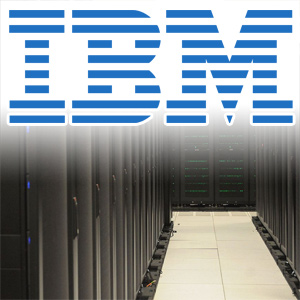 NEWS
NEWS
 NEWS
NEWS
 NEWS
NEWS
![]()
The datacenter has become the metropolis of cloud computing and a space where a lot of things come together for Internet and networked and while the field is constantly changing a group of servers is a massive investment for any outfit from enterprise to small business. As a result, looking at the IBM OpenPOWER Consortium news it brings to mind a story of putting that same metropolis to work for the people who work in it streets, its fiber cables, and its racks.
The announcement of the OpenPOWER Consortium via IBM came out recently and there’s a lot of interesting commentary already involved in what this means for the services sector.
What this Consortium means for developers
Today I spoke with Brad McCredie, IBM Fellow, Vice President and CTO of Systems and Technology, about the alliance IBM is forming with several other vendors to cover the full stack from hardware, firmware, and all the way up to customization software for the POWER chipset—and this means a lot of things for developers, it means that when it comes to this line, devs with software engineering to hardware engineering backgrounds will find themselves in a potential playground of ideas. The question will be all about what the underlying build will be designed to support.
To do this, IBM sought partners across the stack from hardware to software including Tyan, Mellanox, NVIDIA, and Google. If anything this should tell everyone watching this is more than just about chips, and according to McCredie, it’s about enveloping the entire development stack.
“What we’re doing here is taking a complete stack of hardware, software, and firmware and refactoring it into a set of open offerings that are included in the OpenPOWER ecosystem. What’s being injected here is essentially genetic material to grow an ecosystem: including customizable system-on-a-chip-design, firmware (open source firmware sets), as well as OS hypervisors, and an open stack.”
As IBM drives innovation in what chipsets are produced for datacenters it will open up broad opportunities to develop applications for and on them. Since much of the OpenPOWER ecosystem appears to be set upon an open source software foundation, this means that a great deal of what already exists for such projects will be easily leveraged to work on these systems. As a result, it’s highly likely that cloud stacks (OpenStack, etc.), Big Data (Hadoop, etc.), and others will find a place to nestle in with alongside the hardware developments.
Coupling in Mellanox and NVIDIA with IBM POWER
The obvious choice of NVIDIA here is because as a chipmarker it has shown a huge capability for producing highly-parallel matrix math computational monsters—which is the superior technology for visual technology and why NVIDIA is well-known in the gaming industry—but GPUs have many applications that involve doing highly-parallel computation which lands them right smack in the middle of cloud-enabled computing, Big Data analysis, high ranges of statistics, and a great deal of uses for research.
As Big Data continues to make an impact on the development of software and hardware in the future, NVIDIA’s GPUs will be extremely useful for leveraging as computational powerhouses—especially in outfits that are using data centers as clusters of machines that can harness GPUs to do parallel computation in the hyperscale and scale-out factors. Developers will find themselves with challenges that involve how to make use of clusters of computers with GPUs designed to give them rapid computation and can handle breaking apart and stitching together tasks.
I asked an NVIDIA spokesperson to weigh in on these potential tasks:“As you may have noticed from recent announcements (Shazam, Google, Nuance, and others), GPUs are playing an increasing role in big data analytics and machine learning. We believe IBM’s leadership in enterprise applications and systems combined with the NVIDIA CUDA ecosystem for GPU acceleration are a great fit.”
And as for developers, using the NVIDIA portion of the stack may well be painless, the spokesperson added:
“We believe applications developers choosing to transition from using GPUs with x86 CPUs to using GPUs with POWER CPUs will have a seamless experience. To help along with this, NVIDIA will provide a software toolkit and developer kit for developers to tap into the emerging POWER ecosystem. Stay tuned for updates about this.”
The addition of Mellanox seems particularly good for the Big Data and cluster development angle because network fabric and bandwidth between multiple clustered servers will be important to make sure data keeps moving. As it’s said, data has inertia—and since computational power needs a particular amount of “flow” to keep going, there will need to be networking hardware and firmware on board that can keep up.
There’s also a huge development space opportunity here, because chances are good that network fabrics and smart operations will evolve—especially things like software-defined-networking (as we’ve seen from outfits such as Riverbed) since an on-board NIC from Mellavox, coupled with open source firmware BIOS, could give a software-defined-datacenter the capability to manage a lot of computing power.
All of these things together—including IBM’s partnership with vendors across the stack—means that opportunities will crop up to assess these systems from the close-to-chip firmware and BIOS level all the way scaled out to the hypervisor and software-defined-datacenter level. As IBM’s OpenPOWER consortium begins to pick up steam, it most assuredly will lead to some exciting times in the development world.
THANK YOU